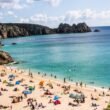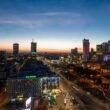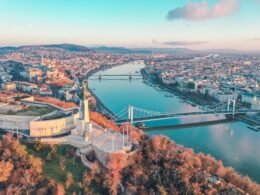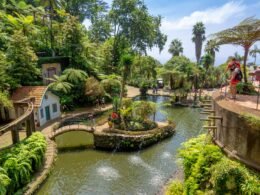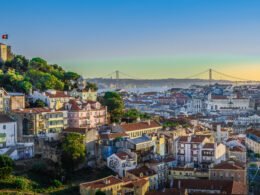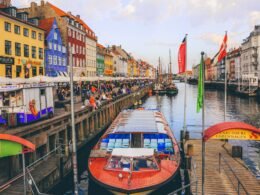Israel is an incredible country full of historic and religious importance. Despite its tiny size, the country is also home to unique geological features as well. With a mix of historical sites, modern cities, and beautiful beaches, there’s a lot to do in Israel. If this is your first trip to Israel, we’ve put together the perfect one-week Israel itinerary for you.
You might think that one week is plenty of time to explore a geographically small country like Israel, but there’s so much to do that you’ll only be able to see some of the highlights. On this trip, you’ll visit two of Israel’s major cities: Tel Aviv and Jerusalem. You’ll also take day trips to explore interesting areas in the country.
For the most part, getting around Israel is not too tricky, especially if you stick to the areas most popular with tourists. It’s possible to rent a car if you want to have flexibility in your schedule. Otherwise, you can get around by train, bus, or private car depending on your budget.
Day 1: Tel Aviv
Tel Aviv is Israel’s “city that never sleeps.” The main cosmopolitan city in the country, Tel Aviv has beautiful beaches and hip nightlife alongside a rich history and culture.
You’ll arrive at Ben Gurion Airport about 12 miles south of Tel Aviv to begin your adventure in Israel. The city will be your home base for several days. It’s a compact city and can mostly be explored on foot.
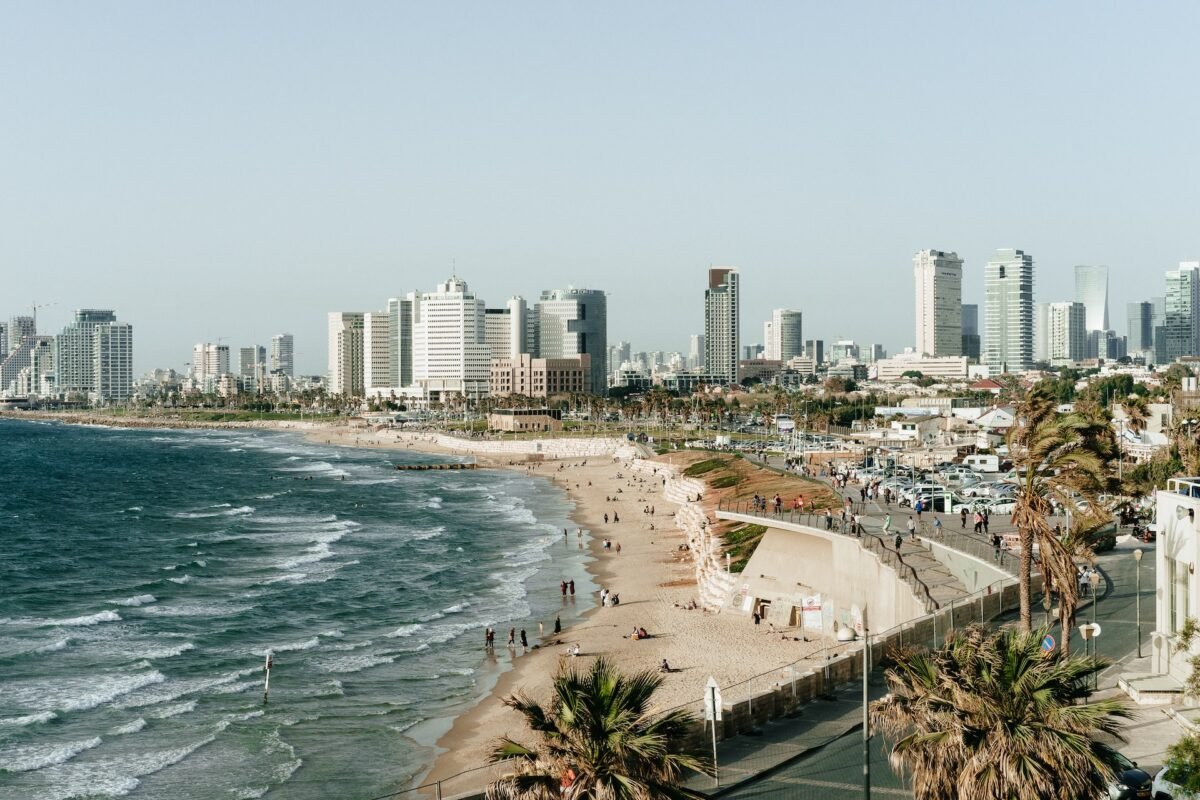
What to do and see in Tel Aviv?
Begin your visit to Tel Aviv by exploring Rothschild Boulevard. This iconic street is right in the heart of the city and is one of the most popular attractions for visitors. This hot spot was one of the original streets to emerge in Tel Aviv over 100 years ago.
It’s recognized as a UNESCO World Heritage Site thanks to its unique architecture. If you’re interested in architecture, you may enjoy taking a guided architecture tour through the area. There are some fascinating buildings that won’t want to miss.
As you walk along the Boulevard and explore the area, you’ll find historic buildings alongside restaurants, cafes, shops, and kiosks. Here are a few highlights you’ll want to stop to see.
- Independence Hall
- Founders Monument and Fountain
- Habima Square
- Yaakov Garden
After strolling along Rothschild Boulevard, head to Gordon Beach, one of the most popular beaches in Tel Aviv. Enjoy the blue Mediterranean water as you relax on the sandy beach. During the summer, you’ll find a variety of activities going on throughout the day.
See also: 5 Interesting Things to Do in Tel Aviv
Where to eat in Tel Aviv?
Rothschild Boulevard is full of restaurants and kiosks. You can either grab coffee, pastries, and sandwiches at the kiosks or sit down at a restaurant. As far as restaurants go Milgo Milbar, Social Club, and Cafe Europa are all good options.
There are also a variety of choices at Gordon Beach. LaLa Land is one of the more popular restaurants. Loullie and Por Do Sol are also good nearby spots to eat.
Where to stay in Tel Aviv?
- $$$ – Hotel Rothschild 22
- $$ – Oliver
- $ – Selina Neve Tzedek
Day 2: Tel Aviv
As one of the main large cities in Israel, there’s plenty to do and see in Tel Aviv. In fact, you could spend an entire week in the city and still not see everything. Today, though, you’ll spend time in Jaffa. This historic neighborhood is the site of the ancient port which is the oldest part of the city.

What to do and see in Jaffa (Tel Aviv)?
No visit to Tel Aviv is complete without visiting its southern neighborhood. Jaffa is the site of one of the oldest ports in the world, and as a result, this area is rich in historic significance. The area is in the midst of restoration and revitalization now.
You must make a stop at the Flea Market in Jaffa. Here you find treasures including Persian rugs and tiles, antiques, jewelry, and a variety of other items.
In addition to the Flea Market, here are a few other must-dos while in Jaffa.
- Clock Tower
- St. Peter’s Church
- HaPisga Garden (Gan HaPisga)
- Wishing Bridge (Gesher HaMazalot)
- Port of Jaffa
Where to eat in Jaffa (Tel Aviv)?
You’ll find many delicious food options in Jaffa. It’s hard to pick the best from the many restaurants in the area. Dr. Shakshuka is perfect if you want North African home-style cooking. For a laid-back meal, try out Cafe Puaa. If you’re looking for high-end cuisine, sample the offerings at Raisa by Michelin-star Chef Uri Levy.
Also, be sure to stop by Abuelafia. Grab a sweet or savory pastry from this Arab bakery at some point during the day.
Day 3: Day Trip to Caesarea
Travel time: 1 hour
Take a day trip from Tel Aviv to Caesarea. The city on the Mediterranean coast is home to one of Israel’s most impressive archaeological sites, and it’s a fascinating city to explore in general.

What to do and see in Caesarea?
Getting to Caesarea can be a bit tricky because there aren’t great public transportation options from Tel Aviv to Caesarea. For this reason, many visitors either take a group tour or book a private guide. Either one is a good way to see the city. If you have a rental car, it’s possible to drive to and explore Caesarea on your own.
The main draw in Caesarea is the National Park, where you can explore the Roman archeological site. You’ll see ruins dating back to the first century BC, including the thermal baths, the hippodrome, the temple of Augustus, and the royal palace.
Here are a few of the other biggest attractions in the area. If you have time, they’re all worth checking out as well.
- Underwater Museum
- Aquaduct Beach
- Ralli Museum
Where to eat in Caesarea?
You can choose from a lot of different restaurants in the city. If you can, try to have dinner around sunset at one of the restaurants at the harbor. Helena is one of the hottest restaurants in Caesarea where you can dine on local fish and seafood along with local herbs and plants. If you’re in the mood for upscale European options, try out Mariposa. For a relaxed, friendly atmosphere, Aresto is an Italian-style restaurant serving delicious pizza, salmon, and ravioli.
Day 4: Day Trip to the Dead Sea
Travel time: 2-2.5 hours
Today, you’ll take a day trip to visit the Dead Sea. For many, this is one of the highlights of a trip to Israel. The Dead Sea, located between Israel and Jordan is famous for being 10 times saltier than the Ocean. The best beach for swimming (or more accurately floating) in the Dead Sea is Ein Bokek Beach, so that’s where you’ll be visiting.
You can get to the Dead Sea from Tel Aviv by car or by bus. You have more flexibility if you go by car, but the travel time will be roughly the same either way.
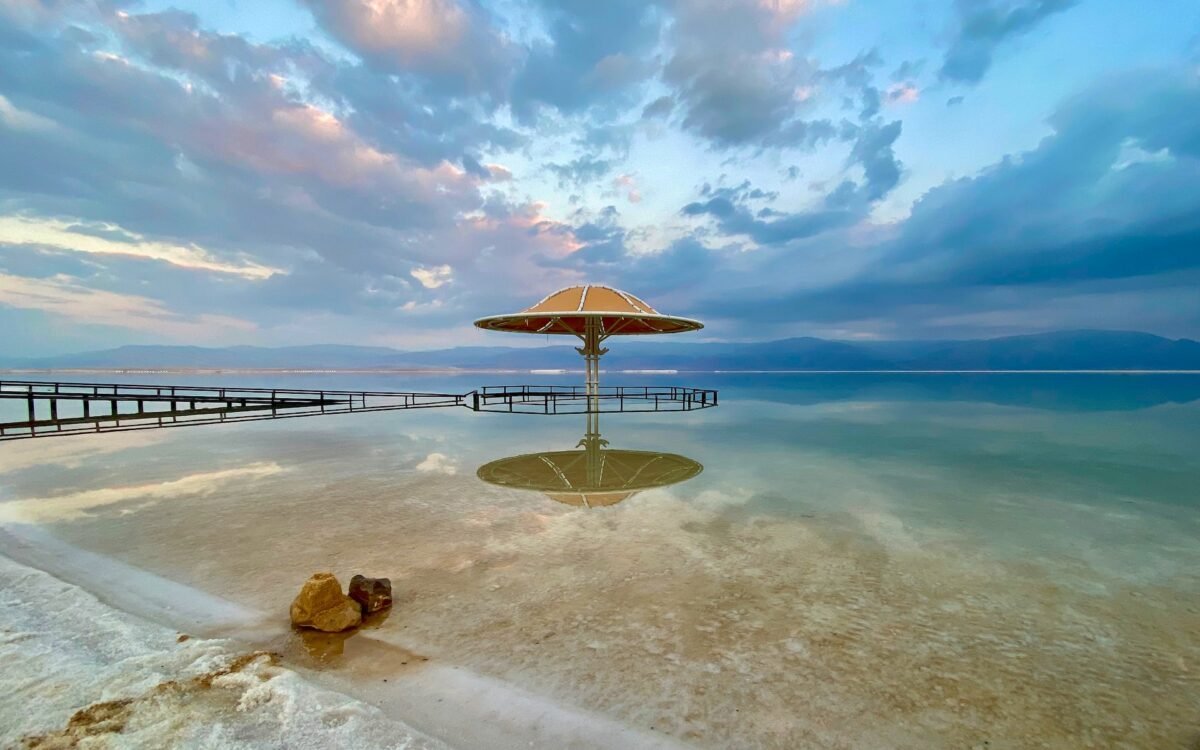
What to do and see at the Dead Sea?
At Ein Bokek Beach, the best thing to do is relax by the shore and spend time swimming in the Dead Sea. If you want a chair to lounge in, you can rent one there. Besides swimming and relaxing, you can go into one of the shops to buy Dead Sea mud since there isn’t any mud at this particular beach. Put on the mineral-rich mud, and then wash it off in the Dead Sea.
Ein Bokek Beach is free, but if it’s in your budget you can also book a treatment at one of the nearby spas. If you get tired of lounging on the beach, you can walk the promenade. It’s an easy walk and a great way to get beautiful views of the Dead Sea and the mountains in nearby Jordan.
Where to eat near the Dead Sea?
A number of restaurants are located near the beach. Most of the hotels along the beach also have their own restaurants. Taj Mahal is a great option serving Mediterranean and local cuisine. Definitely try the hummus here. Tapuach Sdom is one of the oldest restaurants in the area and has great outdoor seating. For delicious Israeli food, try out Last Chance Restaurant.
For drinks, head to Nirka Bar in the Ein Tchelet Mall. The Quatro Dance Bar is also a popular place in the evenings and on weekends.
Day 5: Jerusalem
Travel time: 1.5 hours
Jerusalem is a city filled with incredible historic sites. As a holy city for multiple religions, the city has been drawing visitors for years. In Jerusalem, the old meets new, and the city is constantly changing even as it keeps its traditional sites.
You’ll spend the rest of your time in Israel exploring Jerusalem. Today, you’ll start with the classic attractions in the Old City. Wear comfortable shoes because you’ll be walking a lot. Also, wear something that covers your knees and shoulders because you’ll visit many holy sites.

What to do and see in Jerusalem?
Jerusalem’s Old City is a place of importance for Judaism, Christianity, and Islam. This area in the center of Jerusalem is small but contains many sites that are considered holy. Because there’s so much in a small area, it’s easy to miss some of the sites. Consider hiring a guide or booking a tour in advance to make sure you don’t miss anything.
If you decide you want to explore on your own, be sure to have a map and do some research about the sites in advance so you know exactly what you’re seeing. Here are the biggest highlights in the Old City.
- The Church of the Holy Sepulchre
- Dome of the Rock Mosque
- Western Wall
- Mount of Olives
- Via Dolorosa
- Tomb of the Virgin Mary
- Church of Mary Magdalene
- Garden Tomb
Where to eat in Jerusalem?
While exploring the Old City, stop at Cafe Rimon next to the Damascus Gate to enjoy a view of the open-air market while having a cup of coffee or tea. Stop by the Nabil bakery to have excellent fresh pitas stuffed with a variety of fillings. For a simple, but delicious meal in the Old City, try out Abu Shukri Restaurant.
Where to stay in Jerusalem?
- $$$ – Herbert Samuel Hotel Jerusalem
- $$ – Caesar Premier Jerusalem
- $ – Kaplan Hotel
Day 6: Jerusalem
After a day spent walking around the Old City, today, you’ll spend time in two of Jerusalem’s museums. There’s a lot to see in each museum, so don’t feel pressured to visit every single gallery. Then, you’ll spend the evening relaxing in one of Jerusalem’s fun night hangouts.

What to do and see in Jerusalem?
One of the museums you must visit is the Israel Museum. The museum is most famous for housing the Dead Sea scrolls. While these are well worth seeing, there’s much more to the museum.
You can spend hours looking at the galleries filled with archaeological artifacts, artwork, and Judaic history. In fact, it probably isn’t possible to take in everything in just one visit. At the very least, one thing you shouldn’t miss in the Israel Museum is the model of Second Temple Era Jerusalem which shows what the city looked like before being destroyed in 66 CE.
In the afternoon, plan to visit Yad Vashem, Israel’s Holocaust Memorial Museum. While the museum can be a somber place to visit, it’s important to stop by to reflect on the impact of the Holocaust. Entry is free, and you can explore at your own pace. Spend as much or as little time as you need here.
In the evening wind down by visiting the tachana, or First Station. This location where an abandoned train station used to be is now a fun community spot. Browse through the vendor cars, spend time at the bar, and enjoy one of the restaurants in the area.
Where to eat in Jerusalem?
Have lunch at the Mansfeld Cafe in the Israel Museum. The food is reasonably good, and you will have more time to spend enjoying the museum’s collection.
In the evening at the First Station, you’ll have lots of restaurant options. At Twins, a street food restaurant, you can sample dishes from all over the world. For the best humus, try out the Hummus Abu Shukri location here. If you’re looking for fine dining, try out the Adom restaurant at First Station.
Related: When Is The Best Time To Visit Jordan? The Ultimate Guide
Day 7: Jerusalem
As you wrap up your trip to Israel, you’ll spend your last day exploring Jerusalem’s neighborhoods. You’ll get a chance to see a livelier, more local side of this ancient city. Adjust your schedule as needed and make sure you give yourself plenty of time to catch your flight.

What to do and see in Jerusalem?
Start off the morning with a visit to the Yemen Moshe Quarter to see the iconic Montefiore Windmill. This structure was one of the first major things to be built outside the Old City.
As you scroll through the cobbled streets of Yemen Moshe, you’ll see historic stone buildings from the 1890s and picturesque gardens. Make sure to take a stop by Teddy Park near the neighborhood to see the water fountain.
Next, head to Ben Yehuda Street, one of the most popular areas for souvenir shopping. You’ll find great souvenirs, not just the small knickknacks and t-shirts that other areas have.
Afterward head to Machne Yehuda, which locals usually just call “the shuk.” Here you’ll be able to shop as much as you want. Everything from spices, products, toys, and souvenirs is available. If you need to rest for a bit, stop somewhere to have a coffee or maybe a beer depending on how you’re feeling. If you’re staying through the evening, Machne Yehuda is also a great place to experience Israeli nightlife. After the stalls close, lots of restaurants, bars, and clubs open in the area.
Where to eat in Jerusalem?
If you’re in Yemen Moshe at lunchtime, head nearby to Bardak for great Italian and pizza dishes or to Touro for delicious Mediterranean cuisine. If you’re already shopping on Ben Yehuda, head to Moshiko for excellent falafel.
Useful tips for traveling in Israel:
Israel is an exciting place to visit, but there are a few things to keep in mind to ensure your trip goes smoothly.
First, make sure you don’t lose the visa paper you are given when you arrive in the country.
Second, be aware of the Shabat hours when planning. Weekends are Friday through Saturday. Many religious places close around 4-5 pm on Fridays and don’t open again until Saturday evening.
Finally, make sure you pack comfortable shoes. You’ll spend a lot of time walking while exploring different sites in Israel. If you plan to visit any religious sites, have clothing that covers your shoulders and your knees.
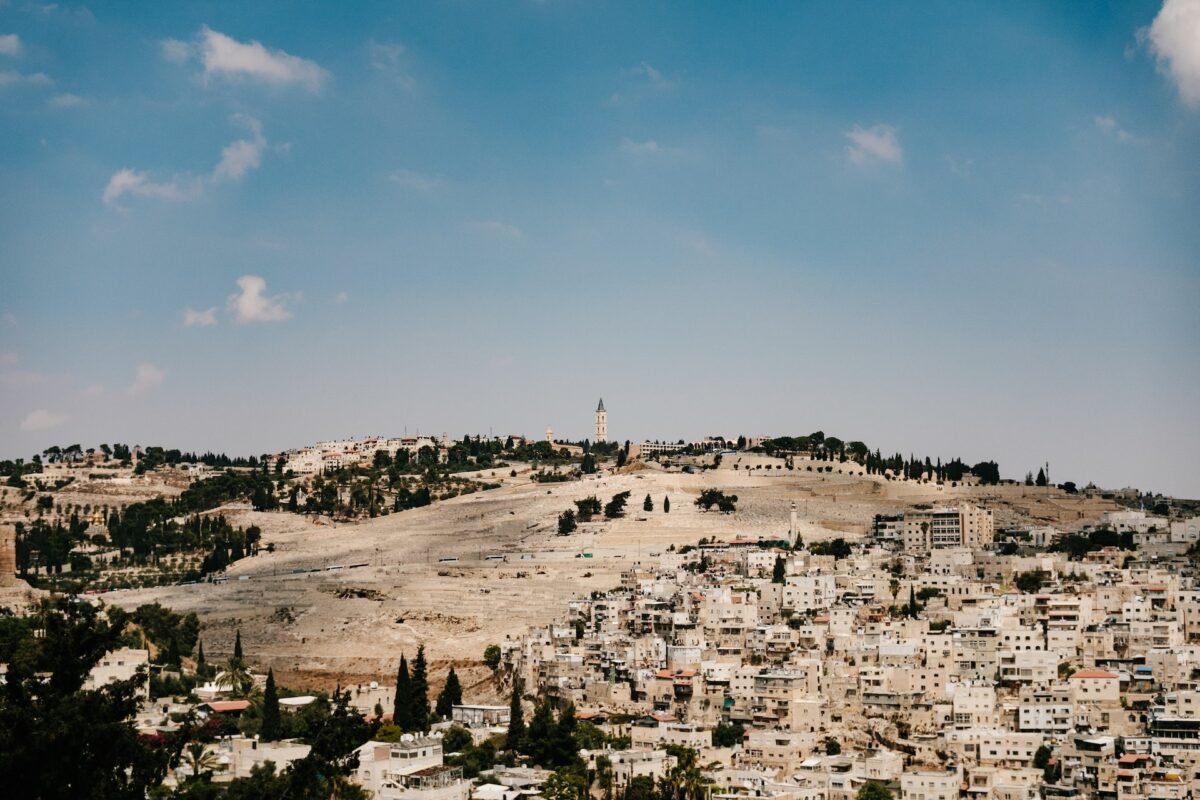
The best time to visit Israel:
The best time for tourists to visit Israel is during the spring and fall when the weather is the most pleasant. The summer months tend to be hot, but if your main interest is heading to the beaches, the heat is not a problem. Keep in mind any holidays. For some people, religious days may be a reason to visit certain sites in Israel, but others may prefer to avoid crowds.
What is the currency of Israel?
Israel’s currency is the New Israel Shekel, commonly called shekel for short. In general, 3-4 shekels is equivalent to 1 US dollar.
Can you drink tap water in Israel?
The tap water in Israel is considered safe to drink. If you don’t like the taste or prefer not to drink tap water when you travel, you can find bottled mineral water at supermarkets or kiosks.
The language of Israel:
Hebrew is the official language in Israel. Hebrew along with Arabic are the two most widely used languages in Israel. However, English is commonly spoken and understood as well. Many signs are in Hebrew, Arabic, and English. In tourist areas, you can get by speaking English.
Is Israel safe?
The risk of street crime and violence is fairly low while visiting Israel. Pickpocketing can be an issue just like in many other popular tourist destinations. However, you should check any travel advisories from your government about traveling to Israel. Acts of terrorism or civil unrest can be a concern on some occasions. Overall though, your chances of being harmed are relatively low while in Israel.
You may see lots of military presence and security in places, but this isn’t usually a reason to be worried.
Single women traveling alone should avoid going to isolated places at night, and be alert. However, the risk to women is not higher than in most destinations.
Final thoughts:

Now, you’re ready to begin your adventure in Israel. One week might seem like a lot of time for this small country, but you’ll be amazed by the incredible experiences offered there. You’ll quickly see why Israel is a bucket list destination for many people.
As you plan your trip, check out more of our guides to Israel. Also, take a look at our Ultimate Jordan Itinerary if you want to extend your trip to Israel’s neighboring country Jordan.



